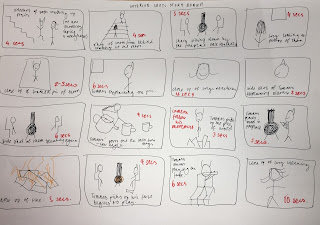Post 34
Macro Elements of film form The Number 23. Representation The social groups that are represented on screen in this film include married heterosexual couples, criminals and children. Nearly every social group is featured in this film as the film analyses the effect of superstition on a community. The representations are relatively effective as the characters are portraying and acting how they would in real life - if the situation was real. The reason that the representativeness of the scenario and character actions are reliable is to create a connection between the viewer and character. This is done in order to subconciously question the viewer if they would act the same in the situation and allow them to reflect on their own emotional responses to the film content. Genre The genre of this film is a combination between mystery and thriller. This is made evidently clear because the camera angles that are in the trailer appear to be 'jumpy', rushed and inconsistent....

